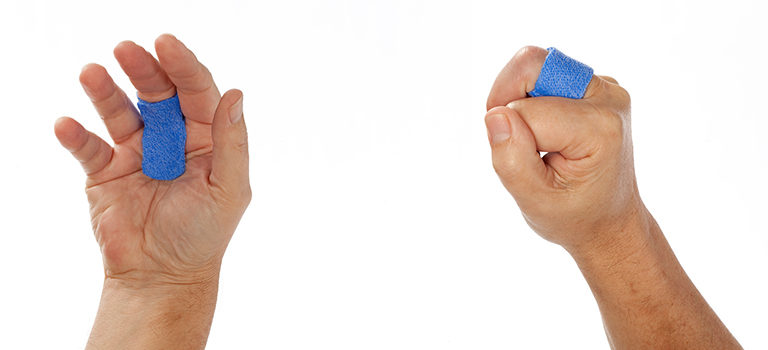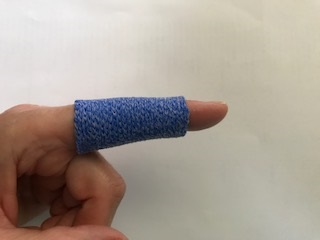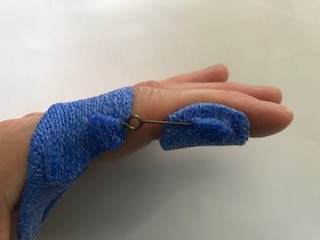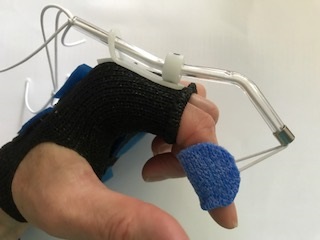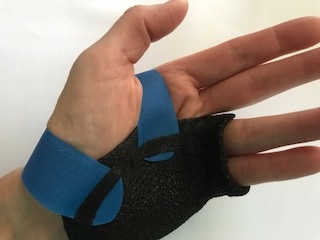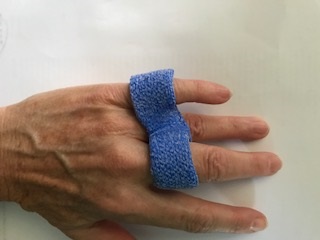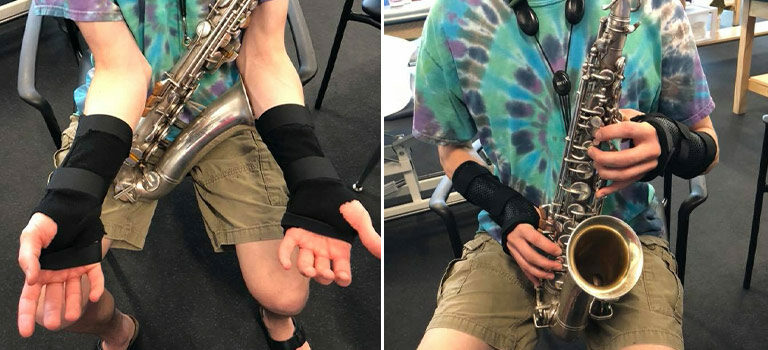
Orthoses for Regaining PIP Joint Extension
A study on the effectiveness of different custom-made orthoses for regaining PIP joint extension
Proximal interphalangeal (PIP) joint active motion can be affected by any trauma that occurs to the surrounding tissues. Even trauma that occurs more proximally at the wrist joint can negatively affect an individual’s digital motion resulting in the loss of PIP motion. Wrist and finger fractures, dislocations, ligament tears, synovitis, oedema and other soft tissue injuries can cause stiffness and loss of motion at the PIP joint, especially loss of joint extension.
A recent systematic review published in the Journal of Hand Therapy has examined the effectiveness of different orthoses for regaining full proximal interphalangeal (PIP) joint extension.
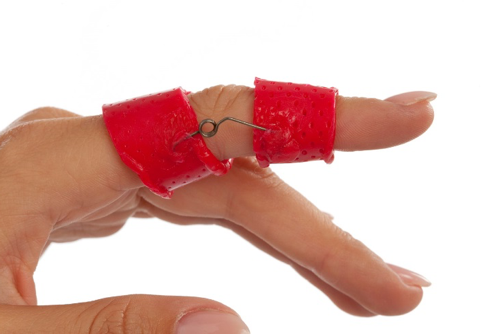
Tested Treatments
Clinicians typically recommend the use of orthoses as a conservative treatment to help patients regain PIP motion after injury. The goal of this treatment is to regain active PIP motion and full use of the fingers for functional activities.
The authors of this review examined different types of orthoses commonly prescribed for PIP extension, the wearing schedules of these orthoses and outcome measures used to evaluate this intervention.
Four types of orthoses for regaining PIP joint extension were tested:
- A static immobilization PIP joint extension orthosis worn at night.
- A custom-made dynamic PIP joint extension orthosis (Capener style).
- A custom-made dynamic PIP joint extension orthosis (daytime) and static PIP extension orthosis (night time).
- A custom made metacarpophalangeal block orthosis to promote PIP extension by keeping the MCP joints positioned in flexion.
The outcomes gathered in the clinical trials included primarily active range of motion measures. The authors of this review also suggest that it may be important to gather functional outcomes, patient satisfaction regarding the functional outcomes, and also patient input on wearing the orthosis and its effect on their daily routines.
Clinical Recommendations
Based on the results of this review, the authors made several clinical recommendations:
- Make sure the orthosis is worn for at least 6 hours per day for a duration of 8-17 weeks.
- Discuss patient satisfaction with the orthosis and use a client centered approach to the treatment.
- The force should be low enough that it is felt by the patient, but it should not cause pain.
- Monitor the wearing schedule for best results.
Extra tips
- The patient should do active finger exercises along with orthotic wear.
- Inform patients of possible symptoms of too much force, including swelling, tingling, colour changes, etc.
The orthoses described in this review article have been recreated here with Orfit materials. We added a relative motion orthosis (yoke orthosis) to the selection as this orthotic design encourages active PIP joint extension when the MCP joint of the involved digit is held in flexion.
- PIP joint extension orthosis static immobilization
- Dynamic PIP extension Orthosis (Capener style)
- Dynamic PIP joint extension with Orfitube and Orfitube adjuster
- MCP joint blocking orthosis in flexion Volar view
- Relative Motion or Yoke Orthosis for PIP extension of ring finger
Check out these orthoses and our selected materials for easy fabrication:
- PIP Extension Orthosis- Static Immobilization: Use Orficast 3 cm/ 1” (wrap around method) or Orficast 6 cm/ 2.5” or Orficast More 6 cm/ 2.5” for the pinching method.
- Static MCP Joint Blocking orthosis: Use Orficast More 15 cm/ 6”
Or watch one of our instructional videos on YouTube:
Dynamic PIP Extension orthosis – Use Orficast More 15 cm/ 6” and Orfitube and Orfitube Adjuster:
Capener Style Dynamic PIP extension Orthosis – Use Orficast 3 cm/ 1” and Orficast 6 cm/ 2.5” and PIP joint extension coils:
Static immobilization PIP extension orthosis – Use Orficast 3 cm/ 1”:
Yoke / Relative Motion Orthosis – Use Orficast 6 cm / 2.5” or Orficast More 6 cm/ 2.5”:
Reference
Valdes, K., Boyd, J. D., Povlak, S. B., & Szelwach, M. A. (2018). Efficacy of orthotic devices for increased active proximal interphalangeal extension joint range of motion: A systematic review. Journal of Hand Therapy.
![]()

Written by Debby Schwartz, OTD, OTR/L, CHT
Physical Rehabilitation Product and Educational Specialist at Orfit Industries America.
Debby is a certified hand therapist with over 36 years of clinical experience. She completed her Doctorate of Occupational Therapy at Rocky Mountain University of Health Professions in 2010. She has worked at Orfit Industries America as Product and Educational Specialist since 2007.
Debby is also an adjunct professor at the Occupational Therapy Department of Touro University, School of Health Sciences, and at the Occupational Therapy Department at Yeshiva University, Katz School of Science and Health in NYC. She has written many book chapters in the field of hand therapy and multiple articles for hand therapy journals, including the ASHT Times and the Journal of Hand Therapy. She has published a new textbook on orthotic fabrication together with Dr. Katherine Schofield, entitled “Orthotic Design and Fabrication for the Upper Extremity: A Practical Guide”.
![]()


